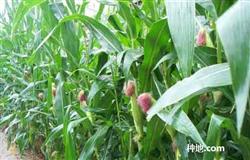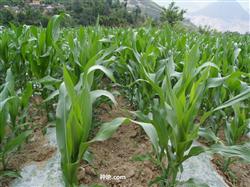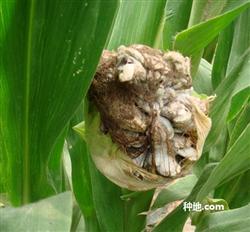What should be paid attention to in the ear stage of corn?

What should be paid attention to in the ear stage of corn? Please introduce that the ear stage of corn refers to the period from jointing stage to male ear flowering stage. Summer interplanting corn or summer direct seeding corn usually takes 25 Mel and 30 days. The vegetative growth and reproductive growth of maize at the ear stage are carried out at the same time, which is the most exuberant period. Maize likes temperature, and the suitable daily average temperature for growth and development at ear stage is 20 ℃-24 ℃. Higher temperature is beneficial to stem and leaf growth and male ear differentiation. The water requirement at the panicle stage is more, accounting for 1% of the total water consumption, and the suitable soil relative humidity is 70% and 80%. Before and after the heading of corn, there is a "critical period" of water, and soil drought will cause a large number of degeneration of florets, and in serious cases, it will cause "neck drought" and rare florescence, resulting in a substantial reduction in yield. Sufficient light conditions are required at the panicle stage, especially from the trumpet mouth stage to the heading stage, in order to facilitate the accumulation of dry matter, coordinate the nutrient balance in the body and promote the differentiation of spikelets and florets. In production, the main goal of panicle stage is to achieve more thick roots, stout stems, broad and thick leaves, thick green leaves, large spikes and many grains. The following management measures should be taken during the ear stage of maize: 1. At present, the temperature is on the high side and there is a lot of overcast and rainy weather, so we should pay attention to strengthen the management of fertilizer and water in the field; in the period of big trumpet mouth, topdressing panicle fertilizer should be applied, and the effect of increasing yield is significant, mainly quick-acting nitrogen fertilizer, and the fields with weak seedling condition and poor soil fertility can be fertilized in advance and increase the amount of topdressing. In the areas with more precipitation, the land flooded or flooded after rain should be drained in time so as not to affect the root growth. two。 In general, the ear stage is ploughed twice, deep ploughing once from jointing to small trumpet mouth stage to promote root development; after small trumpet mouth stage, shallow ploughing should be done to preserve roots and store soil moisture. In the big trumpet mouth stage, soil cultivation was carried out combined with topdressing to promote root growth. 3. After jointing, weak plants and tillers were removed in time to reduce fertilizer and water consumption and improve ventilation and light transmission conditions. 4. The main diseases and insect pests in maize ear stage are leaf spot, leaf spot, stem rot and corn borer, which should be controlled in time. Click to get more corn planting techniques click to get more food crop planting techniques
- Prev

How to grow corn scientifically?
How to grow corn scientifically? Please introduce that corn contains a large amount of lecithin, linoleic acid, glutamol, vitamin E, long-term consumption can effectively reduce serum and cholesterol, reduce the incidence of hypertension and arteriosclerosis, and delay cell aging and brain function degradation. There are anticancer factors in corn.
- Next

What if the corn core is rotten?
What is corn empty stalk disease? Please introduce the symptoms of corn empty stalk disease: corn usually bears two ears, usually one ear, but empty stalk often occurs in the production process, which affects the increase of yield. Such as the investigation in Kuandian, Yangyan, Benxi, Huanren and other places in Liaoning, the empty stalk rate is 12% Mur20% 667 m2 and the yield is reduced by 50 kg.
Related
- The first cup of black tea in spring, the flavor and history of tea gardens in Kenya, Africa
- The computer can not only choose potatoes, but also grow tea rice. AI will grow winter oolong tea champion.
- It is not only the inflated tea bitten by insects, but also engraved with the four seasons tea in Beipu.
- The Oriental Beauty Tea Festival in Zhuxian County takes the stage at the weekend to experience the plus-size feast of oil tea.
- & quot; Oriental Beauty Tea & Exploration of Emei in Hsinchu, the hometown of quot;
- The new variety of strawberry "Tainong 1" dessert is the first choice with mellow aroma. Crimson gorgeous
- History of Tea in Taiwan: from Wild Inner Mountain to Export Tea Garden
- Two types of Taiwan Oriental Beauty Black Tea won the British three-Star Award for Childhood Tea Xiang Zhang Jiaqi changed from pilot to champion tea maker.
- Banana species and varieties: the planting history of Taiwan Xianren banana and dwarf banana is long, is banana disease resistant?
- Coffee planting Technology: Qianjie Coffee from Seedling to harvesting

